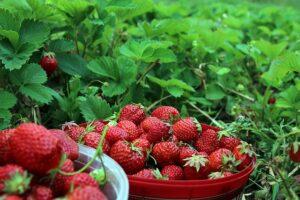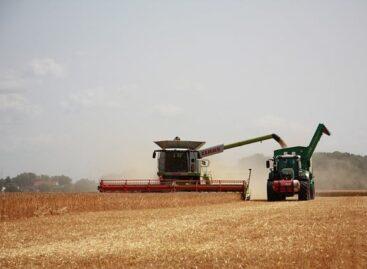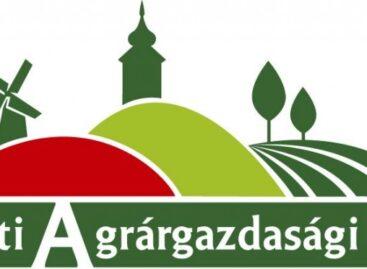A new approach is needed in the cultivation of berries
Although climate change has a serious impact on the domestic production of berries, changes could be achieved in this area with the appropriate production technology and variety selection. The professional day organized by the National Chamber of Agriculture and the Hungarian University of Agricultural and Life Sciences took stock of the sector’s opportunities and presented the results of the previously launched agroforestry experiment to date.
 Due to the changed climatic conditions, a new approach is needed in the domestic production of berries; changes are also needed in breeding, variety selection, plant protection, and the entire production technology. While experience helps a lot, the role of data, new approaches, and modern solutions in practice is increasing. On this occasion, a professional day was organized by the National Chamber of Agriculture and the Hungarian University of Agricultural and Life Sciences (MATE) together with the Institute of Horticulture at the MATE Research Station in Fertőd.
Due to the changed climatic conditions, a new approach is needed in the domestic production of berries; changes are also needed in breeding, variety selection, plant protection, and the entire production technology. While experience helps a lot, the role of data, new approaches, and modern solutions in practice is increasing. On this occasion, a professional day was organized by the National Chamber of Agriculture and the Hungarian University of Agricultural and Life Sciences (MATE) together with the Institute of Horticulture at the MATE Research Station in Fertőd.
Due to climate change and labor shortages, raspberries are only grown sporadically in our country, and there are only a few large, connected plantations in the country: raspberries are grown on 16 hectares in Nógrád County, 10 hectares in Heves County, and 7-8 hectares in Zala and Vas Counties. Our currant cultivation is in a better position, with cultivation taking place on an area of approximately 1,000 hectares. Blackberries are grown on 30-40 hectares nationwide in our country. In our country, Nógrád County is traditionally the true home of berries, but cultivation is still carried out in several parts of Győr-Moson-Sopron County.
All researchers agree that one of the biggest challenges in the cultivation of berries is mitigating the effects of climate change. The ripening time of our main raspberry varieties falls on the period when temperatures of 35-40 degrees Celsius occur in our country. Breeding options alone are not enough to tolerate extremes, plants need to be shaded. Shading can be done with artificial elements (shade tents) or with natural elements (agroforestry system).
The agroforestry experiment to find a natural solution to shading was launched by the MATE Institute of Horticulture. The planting of the poplar clones took place at the end of March 2017, followed by the planting of raspberries, blackcurrants and blackberries in the spring of 2018. In the experiment, the renewal capacity, cane yield and growth vigor of two cane-bearing varieties, ‘Fertődi zamatos’ and ‘Fertődi kármin’, and the candidate cane-bearing, facultative cane-bearing variety ‘Fertődi narancs’ were examined. In 2019, colleagues from the University of Sopron joined the project, who are examining the water flow of the system using hydrological measurements. The aim of the agroforestry experiment is to improve the ecosystem services, economic viability and climate change adaptability of raspberry and, fundamentally, berry fruit production in the Pannonian Basin.
Related news
Harvesting is over in Békés County
The harvesting is over in Békés, the average yields are…
Read more >NAK President: Agriculture faces harsh attack from Brussels
Agriculture faces harsh attack from Brussels, the European Commission’s new…
Read more >Hungarian university collaboration can help grow berries
The Hungarian University of Agricultural and Life Sciences (MATE) and…
Read more >Related news
We are using up the Earth’s resources today, and there is something deeply embedded in this that we don’t even think about.
This year, July 24th is global Overshoot Day, or Overconsumption…
Read more >Pork, wet towel, tricks – this is how Hungarians grill!
Summer is in full swing, grills are constantly working, and…
Read more >Máté Préda is the new head of DODO in Hungary
DODO, a provider of last-mile smart logistics services, has appointed…
Read more >






